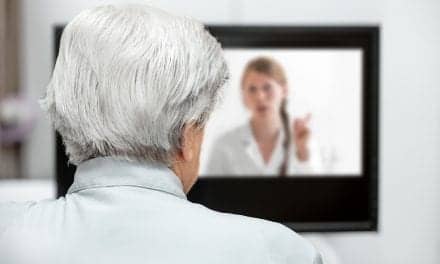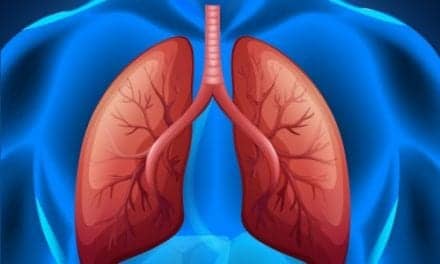-
- Jim Bixby
-
- Bob Mogue
In light of the ongoing changes in oxygen therapy reimbursement from CMS, RT invited oxygen therapy manufacturers to discuss the new reimbursement changes and how they will affect developing trends and new products.
Jim Bixby is CEO of SeQual Technologies Inc. Founded in 1991, SeQual develops and manufactures portable and in-home oxygen concentrator systems and air-dryer products for medical, military, industrial, and commercial markets. Robert K. Jacobson is vice president and general manager of the medical products division for AirSep Corp. AirSep produces oxygen concentrators for individuals’ therapeutic needs, as well as oxygen-generating systems for a wide variety of commercial oxygen applications. Bob Mogue is director of home care for Southmedic Inc, which manufactures a variety of oxygen therapy masks for the respiratory market.
RT: How are the reimbursement cuts of the Deficit Reduction Act of 2005 (DRA) and the recent implementation of competitive bidding affecting the development of new technology in the oxygen therapy industry as a whole? Will fewer products be developed or will products be developed more efficiently?
Bixby: The practice and technology of delivering oxygen therapy are in the early phases of revolutionary changes—changes that can dramatically reduce the actual cost of providing the therapy, while at the same time improving patient care and lifestyle.
The market has had a long-standing expectation that oxygen therapy reimbursement levels will trend downward. This outlook is a primary driver of new technologies, as innovators look for new ways to meet providers’ needs to reduce costs, while at the same time providing better patient care.
The process we have encountered, however, brings the potential of a chilling effect on innovation. After the DRA was passed, it was another year before CMS announced the reimbursement rates under the 36-month cap. The competitive bidding process is confusing and leaves providers uncertain about what this means to their businesses, or even whether they will in fact have businesses at the end of the day. For the past 2 years, it has been difficult for providers to make fundamental decisions about investing in new equipment and technologies when the reimbursement environment is in such a state of uncertainty. Providers need reimbursement stability, or at least predictability, so that they can analyze the business trade-offs involved in a decision to invest more money up front for equipment in order to harvest the benefit downstream. The current state of uncertainty in the market slows the adoption rate for new products and reduces the economic incentive for new product development, and that in turn slows the rate of innovation and progress.
Jacobson: AirSep believes that the most efficient HME companies providing [high] quality home respiratory will ultimately determine what equipment is going to work within the payment guidelines. Knowing that the equipment costs are a small portion of the overall cost of providing a quality home oxygen program, we promote a predicted, stabilized cost of equipment ownership that is a fundamental aspect for our customers. Our product development remains robust—yielding the most complete line of oxygen concentrators in the market. We are planning two new products for the end of the year. Our products are sold in more than 100 countries. We, therefore, need to be responsive to cost containment for the US market, the largest in the world, while also meeting the needs and expectations for other markets outside of the United States.
Mogue: Reimbursement cuts of the DRA and the recent implementation of competitive bidding are more recent examples of reimbursement cuts for government-paid programs such as Medicare. Reimbursement for long-term oxygen therapy (LTOT) has continued to decline beginning as far back as the Six-Point Plan in the late 1980s when modality-neutral reimbursement was introduced for Medicare payment of LTOT. This downward shift in reimbursement has required manufacturers of oxygen therapy equipment to create more cost-effective devices for home care providers, while at the same time offering more choices to the LTOT user. I would expect more, rather than fewer, products to be developed for the LTOT market, primarily because this market is driven by the large numbers of individuals diagnosed with chronic obstructive pulmonary disease (COPD) that require supplemental oxygen.
RT: What are the latest technological trends right now in your segment of oxygen therapy?
Bixby: The trend is toward convenience for patients and cost savings for providers. As mentioned above, because of the unpredictability in reimbursement, providers are looking for ways to cut costs. One of the best ways they can do this is to eliminate the need for weekly or biweekly delivery of oxygen cylinders. Technological trends are following this: we’ve seen a number of companies introduce homefill oxygen units. But homefill units limit a patient’s ability to travel—for overnight trips, they must bring the heavy transfill unit along. And when they are out and about with the filled oxygen cylinders, they still have to deal with an oxygen patient’s number-one concern: what if I run out of oxygen? We’ve also seen the new portable oxygen concentrators: small, battery-operated machines that can operate only in pulse-delivery conserving mode. While these help with trips during the day, they also don’t solve the overnight travel problem. And because of their limited oxygen capability, they often fall short of providing the oxygen required when demand is high, such as during exercise or at high altitude. Patient convenience and patient demand play an increasingly important role in the direction of oxygen system technology and innovation, but it is important that new products also ensure that the therapeutics are not compromised.
At SeQual, demand for our Eclipse® oxygen system has skyrocketed since we launched the product last August, with June shipments more than 20% higher than May. We think this is because it is the only single-source oxygen solution on the market. Patients love it (and often buy it themselves) because it provides convenience and mobility, continuous flow for nocturnal oxygen, whether at home or away, and, most importantly, it keeps them saturated. Increasingly, physicians and caregivers are recognizing the advantage of the Eclipse’s unique high-dose delivery capability. And providers want and need the cost savings the Eclipse brings them.
Jacobson: AirSep was the first company to develop a portable oxygen concentrator (POC) more than 5 years ago, and 2 years ago, we launched our second unit of this kind, the world’s lightest at 4.4 pounds. POCs represent the emergence of a new technology for providing unequaled ambulation for certain patients and situations, as compared to contents-based systems. POCs are gaining worldwide acceptance over time, in the same way that traditional stationary concentrators have proven to be the most reliable and cost-effective way to provide home oxygen therapy.
Traditional stationary concentrators are undergoing refinement to improve upon specifications. Reductions in weight, power requirements, and sound levels, and higher flow capability with higher outlet pressures, are all attractive features, with a strong emphasis on proven reliability and cost containment over time.
Mogue: Technological trends seem to fall into two categories. The first is directed toward offering LTOT users more choices of how they want their oxygen to be delivered, from both a device perspective and an interface perspective. The second is directed toward achieving oxygen delivery that is cost-effective, again on both the device side and interface side. Some of the latest technologies introduced into this market include LTOT devices that are small and lightweight and have a long duration-of-use to satisfy ambulatory oxygen needs. Examples included recent introduction of a number of portable oxygen concentrators, and devices that serve as a stationary oxygen concentrator and fill small portable oxygen cylinders in the home. Another example includes the OxyMask (one oxygen mask that delivers flows from 1 to 40 L per minute and Fio2s from 24% to 90%) on the interface side. All of these are good examples of the two trends described previously.
RT: With the recent Bush Administration 2008 budget proposal to encourage portable oxygen-generating systems and limit Medicare reimbursement for traditional oxygen delivery from 36 to 13 months, is the bell tolling for traditional oxygen delivery systems, or will they remain in the market for the foreseeable future?
Bixby: The potential 13-month cap could be a huge challenge for the entire industry. At SeQual, we have met with a number of our Congressional representatives—both in San Diego and in Washington, DC—to outline the impact this could have on the industry.
However, I wouldn’t say that the proposed change in Medicare reimbursement would mean the end of traditional oxygen systems. Rather, the proposed change is encouraging providers to adapt their business models to eliminate as much unneeded cost as possible. They know that with a portable oxygen system, they can eliminate delivery costs and receive more reimbursement from Medicare—so they are looking at the numbers to determine if it makes business sense to invest in newer, more cutting-edge oxygen systems.
Jacobson: Capping oxygen payments at 13 months would be an unrealistic and destructive scheme for [high] quality home oxygen programs, and it is being fought vehemently by the industry. The infrastructure in place to provide traditional oxygen delivery is extremely cost-effective, with proven results and outcomes, and will survive for the foreseeable future. New technologies will gradually find their place in the market, if proven reliable and cost-effective over time. There is no reason to force the movement from one technology to another, other than political agendas.
RT: What new technology trends do you see developing in your segment over the next 5 years?
Mogue: Encouraging the development and use of smaller, lighter, longer duration-of-use, portable (more ambulatory) oxygen-generating systems will continue, not only from payers like Medicare, but from LTOT users as well. Traditional oxygen delivery systems, both devices and interfaces, will continue to become more nontraditional in order to meet the changing needs of the LTOT user and the home care provider.
Bixby: Certainly, oxygen systems will get smaller and lighter and will run longer on their batteries. But, more importantly, I think we will see real improvements in the practice of oxygen therapy to improve patient outcomes, reduce the number of COPD-related hospitalizations, and reduce the very expensive secondary health hazards of COPD and patient oxygen desaturation. Sensor and communications technology has advanced to the point that we should expect to see “intelligent” oxygen systems that can adapt to the patient’s oxygen needs to keep that patient fully supplied with the right amount of oxygen, and to give the physician much better information to use to achieve the best results. If successful, these advances have the potential to reduce health care costs far beyond the cost reductions to be achieved from simply turning the screw tighter on reimbursement rates.
Jacobson: We envision continued refinements in our core competencies of stationary and portable oxygen concentrators—with an emphasis on reliability, product features, and cost containment. We are developing our product line to accommodate more demanding clinical applications that are very costly to administer with contents-based systems. AirSep’s goal is to provide the most reliable, innovative product line of oxygen concentrators.
Mogue: Technology trends in the next 5 years will include more cost-effective products for the home care provider; more choices for the LTOT user in terms of ease of use, comfort, lifestyle-enhancing, and convenience; smaller, lighter weight, and longer duration of use for portable oxygen systems; and oxygen systems that are a cost-effective combination of portable and stationary long-term oxygen therapy.
Tor Valenza is a staff writer for RT. For further information, contact [email protected].
Competitive Bidding and the Oxygen Therapy Market
The new competitive bidding program, which is required by the Medicare Prescription Drug, Improvement, and Modernization Act of 2003 (Medicare Modernization Act or MMA), will replace the current payment amounts for the items being bid under Medicare’s DMEPOS fee schedule. The actual payment rates will be derived from the bidding process.
Among the the 10 product categories that will be affected are oxygen supplies and equipment, as well as CPAP devices, respiratory assist devices (RADs), and related supplies and accessories.
For suppliers of oxygen equipment, the final rule provides for a minimum of 10 months of payment to a contract supplier who assumes the responsibility for providing oxygen to a beneficiary who had been receiving services from a noncontract supplier. Similarly, if a beneficiary who is renting capped rental equipment switches from a non-contract supplier to one that has been awarded a contract under the competitive bidding program, the new contract supplier will receive 13 months of rental payments. These payment provisions apply without regard to the number of months of payments Medicare previously made to the non-contract supplier; however, payment can be made only if medical necessity for the equipment continues.
For taxpayers, the competitive bidding program means potentially significant savings for Medicare. When fully implemented in 2010, it is projected that these savings will amount to $1 billion annually, according to a CMS press release.
—T.V.
Product detail links available below
- [removed] The Eclipse from SeQual Medical products[/removed]
- [removed] AirSep Life Style[/removed]
- Southmedic Oxyproducts
- Special Federal Aviation Regulation
Regarding Use of Certain Portable Oxygen Concentrator Devices Onboard Aircraft - [removed] Home Oxygen Therapy/An Analysis of Recent Medicare Payment Policy[/removed] (Launches a PDF)
- Protecting Home Oxygen Therapy for Medicare Beneficiaries
- Reimbursement Challenges Hit Home











